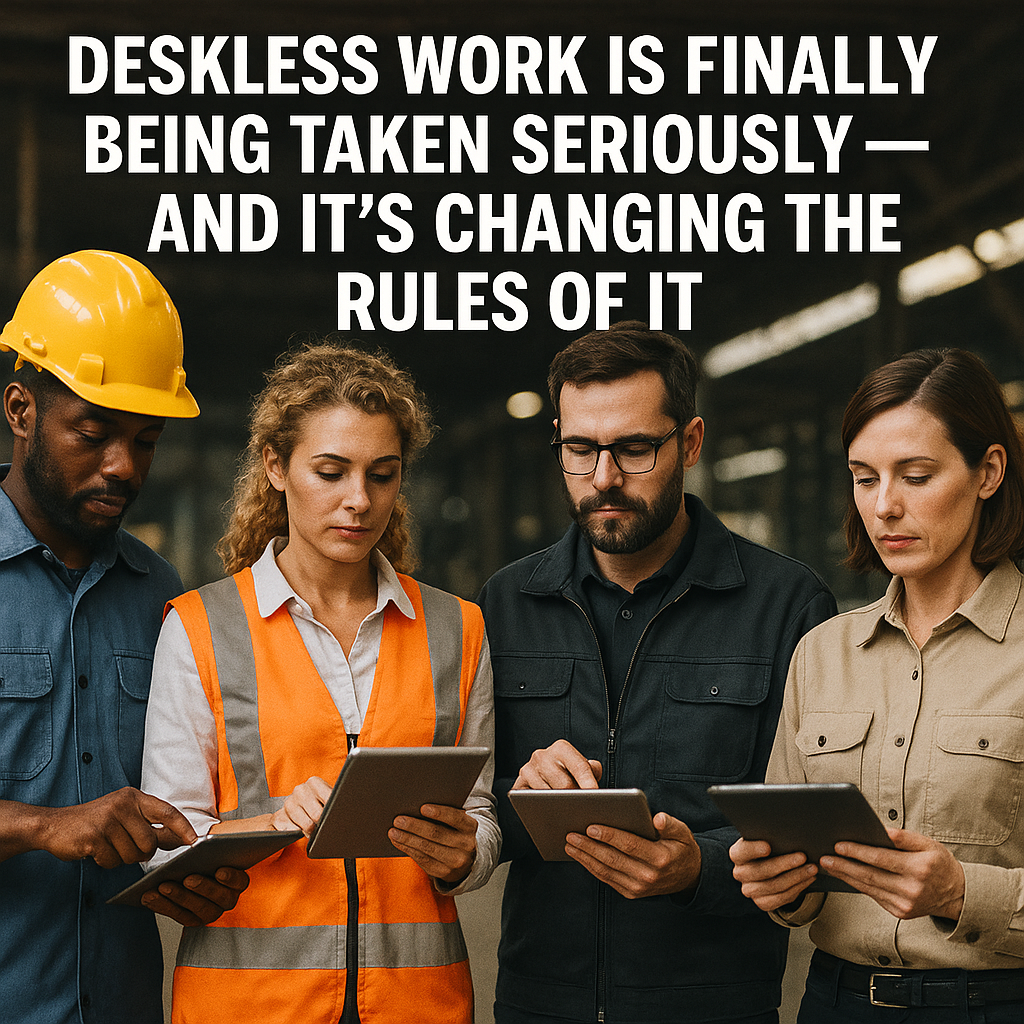Deskless Work Is Finally Being Taken Seriously — And It’s Changing the Rules of IT
For decades, the digital workplace has centered around… well, desks. Laptops, office Wi-Fi, cloud dashboards, static workstations. But that model never quite fit everyone — and now, it’s being rewritten.
More than two billion workers worldwide don’t sit behind a desk. They fix, move, build, transport, serve, heal. And only recently has the tech world started building for them — not just adapting tools designed for office workers, but reimagining what work looks like when it happens on the move.
Old Problems, New Expectations
If you’ve ever tried to run a field operation with apps that crash offline or tablets that choke on updates, you know the pain. For too long, “supporting” mobile or frontline work meant cobbling together patchy solutions — often designed for entirely different use cases.
But that’s shifting. And quickly.
Companies are now rethinking how they build and deliver digital experiences — putting mobility, resilience, and simplicity front and center. We’re not talking about tacking on mobile apps to desktop software. We’re talking about building systems where mobility isn’t an edge case. It’s the default.
The Real Tech Behind the Movement
So what’s actually powering this change? It’s not just a mindset shift — it’s a confluence of maturing technologies:
– Cloud-native platforms that don’t care what device is in play — just that it connects
– Edge computing that keeps things running even when the network doesn’t
– Smarter identity and access that adapts to roles, not devices
– Offline-first apps that still work when signal drops out — then sync later
Put simply: the stack is evolving. And it’s finally aligning with the way deskless work actually happens — in motion, in real time, in environments where reliability matters more than interface polish.
What IT Teams Are Learning the Hard Way
All of this means a major rethink for infrastructure and architecture teams. Suddenly, the assumptions behind firewalls, endpoint policies, and uptime guarantees start to wobble.
Instead of controlling a fixed network perimeter, IT now has to support thousands of dynamic micro-environments — whether it’s a delivery truck, a pop-up clinic, or a factory floor. That means building in observability, authentication, and security at the edge — often without traditional support structures in place.
And yeah, it’s complicated. But the payoff is real: smoother workflows, fewer support tickets, and better job satisfaction on the frontlines.
Where It’s Headed Next
The deskless revolution isn’t theoretical anymore — it’s already underway. Organizations that get ahead of it now are setting themselves up not just for better performance, but for long-term adaptability.
Because the future of work? It won’t be centered around office chairs and ethernet ports. It’ll be wherever the work needs to happen — and that future is already knocking.
